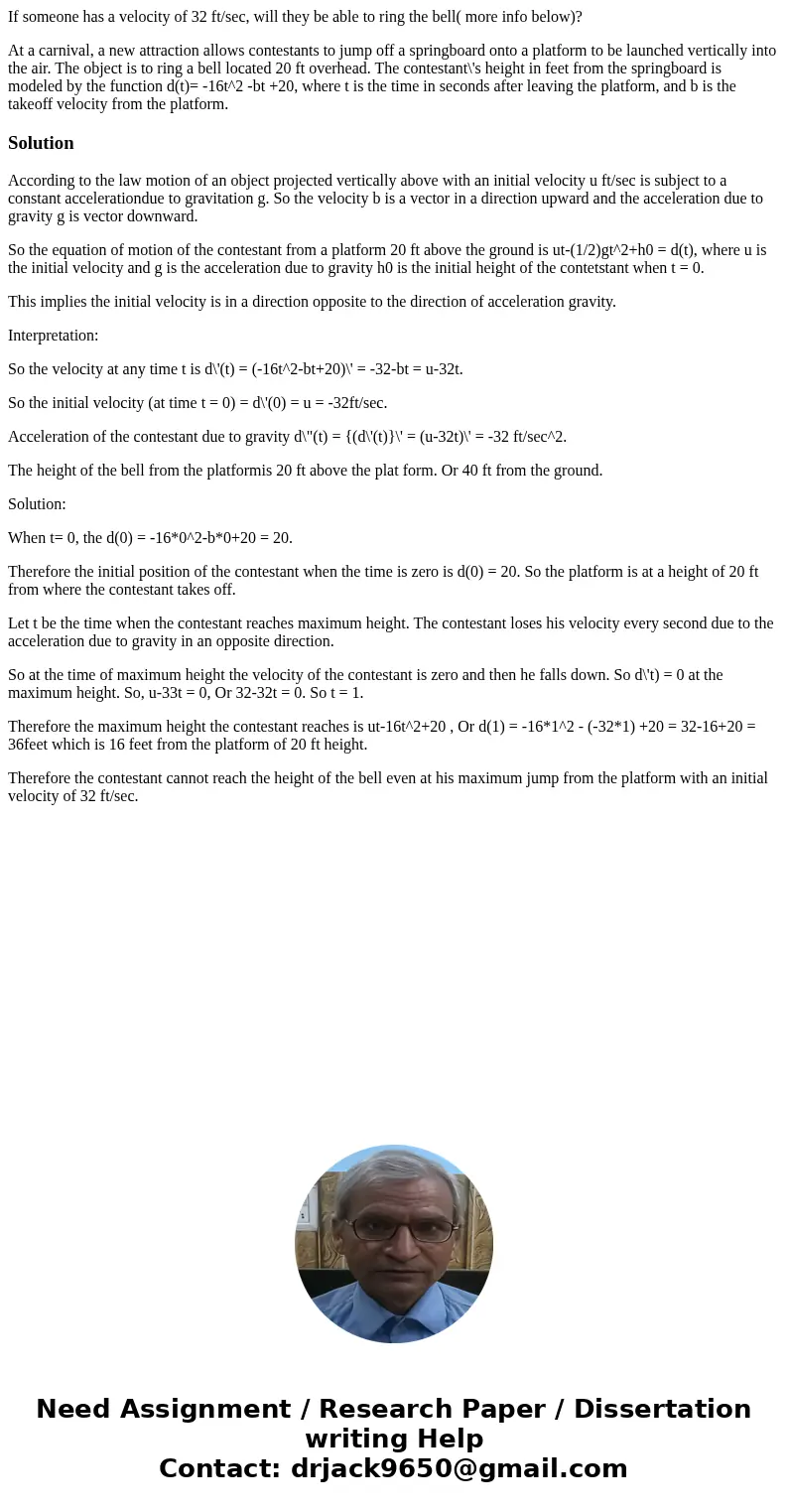If someone has a velocity of 32 ftsec will they be able to r
If someone has a velocity of 32 ft/sec, will they be able to ring the bell( more info below)?
At a carnival, a new attraction allows contestants to jump off a springboard onto a platform to be launched vertically into the air. The object is to ring a bell located 20 ft overhead. The contestant\'s height in feet from the springboard is modeled by the function d(t)= -16t^2 -bt +20, where t is the time in seconds after leaving the platform, and b is the takeoff velocity from the platform.
Solution
According to the law motion of an object projected vertically above with an initial velocity u ft/sec is subject to a constant accelerationdue to gravitation g. So the velocity b is a vector in a direction upward and the acceleration due to gravity g is vector downward.
So the equation of motion of the contestant from a platform 20 ft above the ground is ut-(1/2)gt^2+h0 = d(t), where u is the initial velocity and g is the acceleration due to gravity h0 is the initial height of the contetstant when t = 0.
This implies the initial velocity is in a direction opposite to the direction of acceleration gravity.
Interpretation:
So the velocity at any time t is d\'(t) = (-16t^2-bt+20)\' = -32-bt = u-32t.
So the initial velocity (at time t = 0) = d\'(0) = u = -32ft/sec.
Acceleration of the contestant due to gravity d\"(t) = {(d\'(t)}\' = (u-32t)\' = -32 ft/sec^2.
The height of the bell from the platformis 20 ft above the plat form. Or 40 ft from the ground.
Solution:
When t= 0, the d(0) = -16*0^2-b*0+20 = 20.
Therefore the initial position of the contestant when the time is zero is d(0) = 20. So the platform is at a height of 20 ft from where the contestant takes off.
Let t be the time when the contestant reaches maximum height. The contestant loses his velocity every second due to the acceleration due to gravity in an opposite direction.
So at the time of maximum height the velocity of the contestant is zero and then he falls down. So d\'t) = 0 at the maximum height. So, u-33t = 0, Or 32-32t = 0. So t = 1.
Therefore the maximum height the contestant reaches is ut-16t^2+20 , Or d(1) = -16*1^2 - (-32*1) +20 = 32-16+20 = 36feet which is 16 feet from the platform of 20 ft height.
Therefore the contestant cannot reach the height of the bell even at his maximum jump from the platform with an initial velocity of 32 ft/sec.

 Homework Sourse
Homework Sourse